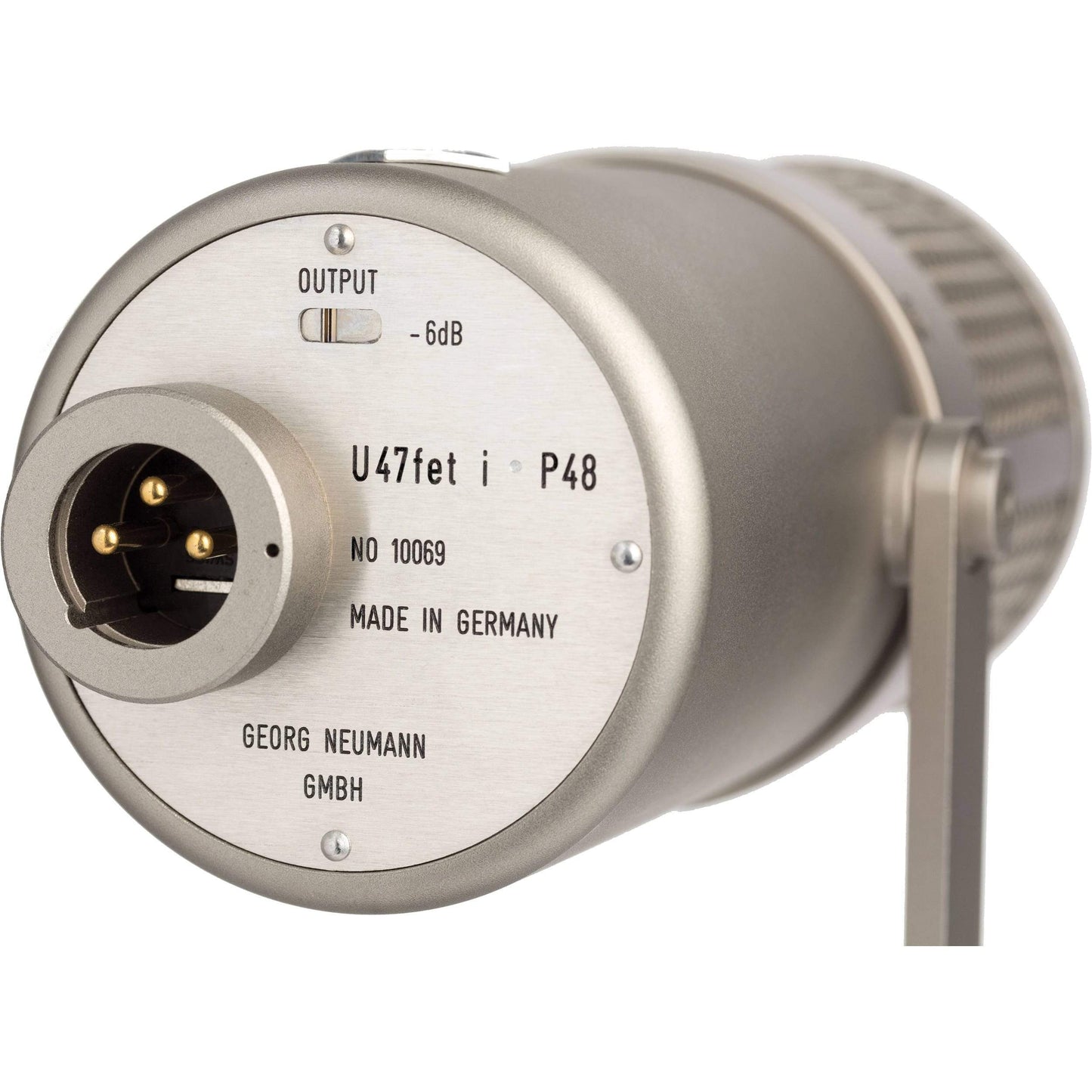Neumann U47 FET I Shop all Neumann
Product Description
Introduced in 1972 as a successor to the legendary U 47 tube microphone, the U 47 fet became a Neumann classic in its own right. Its smooth yet defined character shaped the sound of the 70s. After a long hiatus, the U 47 fet is finally available again, meticulously reproduced from the same components. A true classic, yet far from outdated.
The U 47 fet uses the same K 47 large diaphragm condenser capsule and the same headgrille design as its tube operated predecessor, the legendary U 47, which revolutionized the recording and broadcast industries from 1949 to1960. For sonic continuity, the U 47 fet also uses a similarly oversized output transformer. Otherwise, its transistorized head amplifier is an amazingly advanced design and a testament to Neumann’s state of the art engineering. This “vintage” microphone has a dynamic range of 119 dB!
The U 47 fet can handle extreme SPLs of up to 137 dB, and even 147 dB with the –10 dB pad switch engaged. This, along with its smooth top end and lush midrange, makes the U 47 fet an excellent microphone for bright and loud instruments such as brass and electric guitar. Due to its exceptionally clear and uncluttered low end, it is a great choice for upright bass and bass cabinets. Numerous top engineers consider U 47 fet the ultimate microphone to place in front of the kick drum. At the same time it is an excellent vocal mic for crooners and screamers alike, due to its beautifully balanced response with just a slight, unobtrusive boost in the upper mids for added presence in the mix.
The U 47 fet comes with a unique one-sided swivel mount, which makes it easy to position. Pad and low cut switches are accessible on the rear of the microphone. An additional switch next to the XLR socket allows for attenuating the output signal by 6 dB, which is a handy feature in conjunction with low-headroom vintage preamplifiers.
- Choosing a selection results in a full page refresh.
- Opens in a new window.








